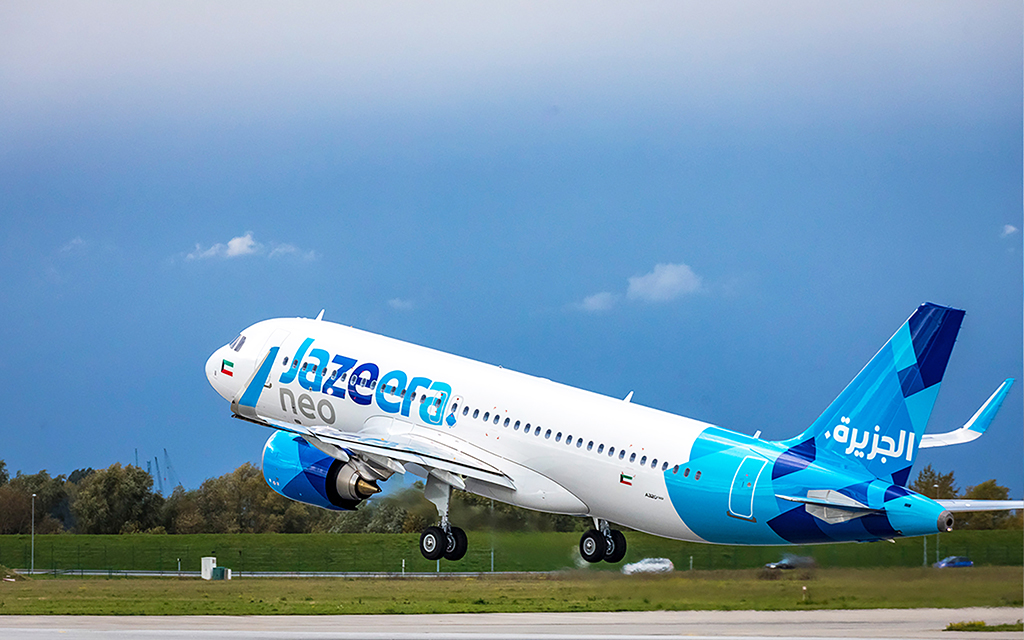
Flydubai has established 10 routes serving Central Asian markets.
Central Asian states are the new battleground for Gulf carriers looking to provide new passenger flows to and from a previously neglected region. And those Gulf carriers are increasingly pushing into the “Stans”—the Central Asian regions of the former Soviet Union—for both point-to-point and connecting services.
This is increasingly taking them to destinations that until a few years ago many people would have found difficult to locate without the aid of a decent-quality atlas—for example, Bishkek and Osh in Kyrgyzstan; Namangan, Samarkand and Tashkent in Uzbekistan; and Dushanbe, Tajikistan.
Now, however, airlines from the Middle East seeking new markets to feed their hubs are providing serious competition for local carriers.
Connectivity to and from cities in the region has traditionally been limited, with national carriers such as Air Kyrgyzstan, Somon Air of Tajikistan and Turkmenistan Airlines having modest fleets and route networks.
The exception is Kazakhstan’s Air Astana. A joint venture between Kazakhstan’s sovereign wealth fund and UK-based BAE Systems, Air Astana has become a significant regional player with services to Europe. It also has its own LCC subsidiary, FlyArystan. Neighboring Uzbekistan Airways also has a respectably sized fleet.
However, most Central Asian airlines’ limited number of outbound routes have meant that Gulf carriers, particularly hybrid carriers and LCCs, have been attracting passengers by offering services to the Gulf’s connecting hubs, giving Central Asian passengers access to global connections.

Particularly active is Kuwaiti LCC Jazeera Airways, which has found a niche in religious tourism, flying Central Asian passengers via Kuwait to Saudi Arabia, both for the Hajj and the lesser-known “little pilgrimage” of Umrah. Since June 2021, Jazeera has opened eight routes to the Central Asian states.
“Our CIS routes have grown significantly,” Jazeera VP-marketing and customer experience Andrew Ward said. “The main segment is Umrah religious travelers connecting through to Jeddah and Madinah. In addition, we get outbound Kuwaiti leisure travelers going to Bishkek, Almaty and Moscow. In fact, routes to the CIS and religious tourism have constituted the airline’s largest growth segment since the pandemic.”
The traffic is not all one-way. “Kuwaitis like to explore new destinations and also, these are Muslim countries,” Ward said.
“We will always look at additional routes if they make commercial sense and there is undoubtedly more potential across these markets.”
Jazeera CEO Rohit Ramachandran concurs.
“One of our most profitable routes is to Osh, a little city in Kyrgyzstan, which is the Muslim enclave in that country. By our reckoning, Jazeera is the largest foreign operator of Umrah flights,” he said. “Our team has done an excellent job engaging with the local travel trade and extracting quite a lot of value. I think you’ll find that out of the Gulf carriers, we probably have the biggest share of the market from Central Asia.”
Other Gulf LCCs making inroads into Central Asia are Saudi Arabia-based flynas and Wizz Air Abu Dhabi, but the airline with the largest portfolio of routes in the region is flydubai, with 10.
“Flydubai was established in 2009 with a clear mandate to further strengthen Dubai’s direct airlinks in the region and to open up underserved markets,” CEO Ghaith Al Ghaith said. “We realized early on the potential and the gap in these emerging Central Asian markets.”
The airline now funnels traffic into its Dubai hub from destinations that previously had few services heading out of the region. The carrier now operates into all five of the ex-Soviet Stans, as well as to the small states of Armenia, Azerbaijan and Georgia further to the west.
Flydubai has seen demand for travel on these routes grow “exponentially” since its first service to Baku in Azerbaijan in 2009, Al Ghaith said.
“We continue to look at more opportunities to grow our presence in the CIS market and add frequency on existing routes. Seventy percent of the traffic to these markets is point-to-point, and around 20% is connecting further on the flydubai network to the GCC [the six Arab nations on the west coast of the Gulf] and the [Indian] sub-continent.”
On the western fringes of Central Asia, the Caucasian nation of Armenia is another small country that has been poorly served by airlines in recent years. Armenia lost its last national carrier, Armavia, in 2013.
The Sharjah-based Air Arabia Group has now set up a joint venture, Fly Arna, with the Armenian National Interests Fund (ANIF) holding 51% of the shares and Air Arabia 49%.
The new airline began operations in 2022. Air Arabia has extensive experience of joint venture operations and Fly Arna is using Airbus A320s from Air Arabia’s fleet.
Central Asia is also being wooed from the other side of the region; Indian LCC IndiGo plans soon to start services to Tbilisi, Georgia; Baku, Azerbaijan; Tashkent, Uzbekistan; and Almaty, Kazakhstan.





